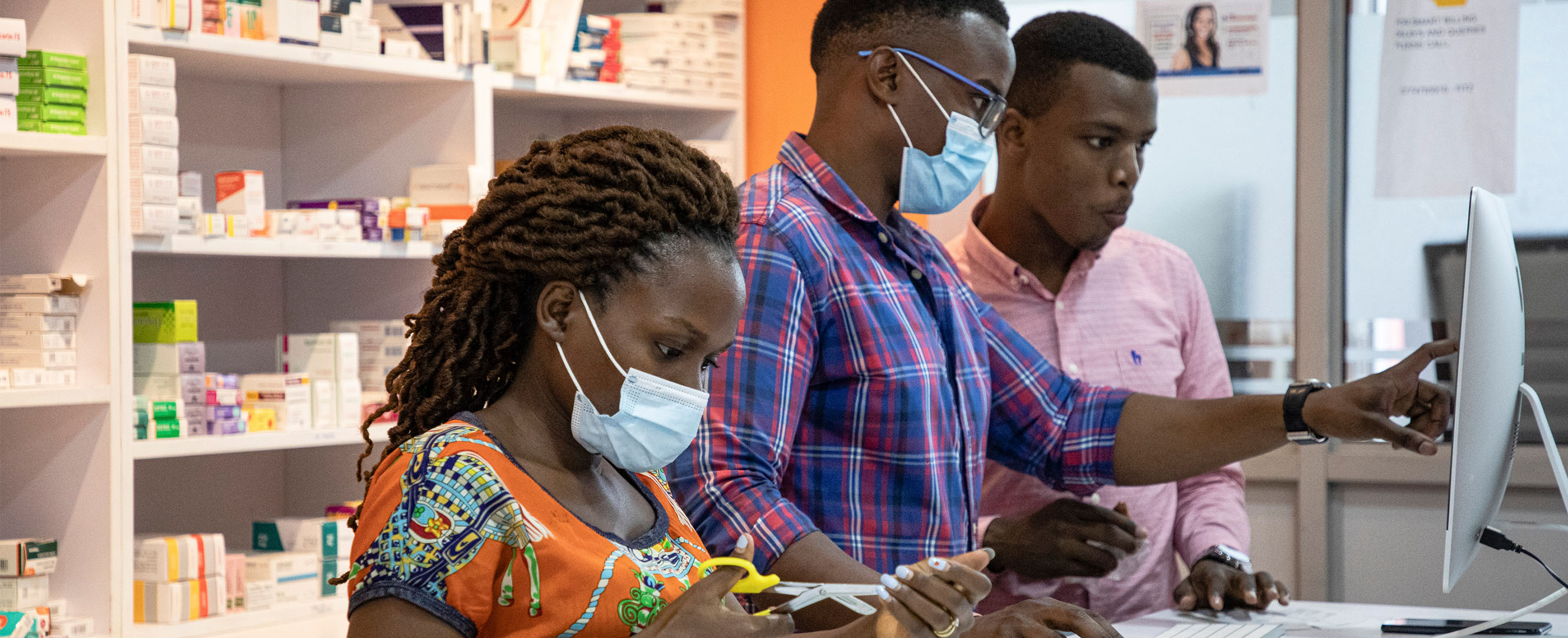Published on July 11, 2023
Protectionism could jeopardize health outcomes in countries that spend more on global trade in health goods
Global security has now assumed new dimensions, the latest being health security that reflects mounting concerns about the cross-border spillover effects of new infectious diseases.
Communicable diseases—such as zoonotic diseases caused by germs passed between animals and humans and rising drug-resistant disease-causing germs—are posing new global health risks. Over the past two decades, a series of infectious outbreaks, including of SARS (2003), H1N1 (2009), MERS (2012), Ebola (2014), Zika (2015), Nipah (2018), and most recently the COVID-19 pandemic, have drawn urgent attention to the financing and delivery of global public goods for health.
State of trade
Global trade in health goods has assumed greater significance. While overall goods trade declined sharply in 2020 following border closures, lockdowns, and other restrictions to stop the contagion, medical goods trade rose by 13.2 percent, and critical COVID-19 goods such as face masks recorded an increase of more than 400 percent in April 2020, reflecting a surge in prices due to shortages in the early stages of the pandemic (World Bank and WTO 2022).
Trade in pharmaceutical inputs, pharmaceuticals, and medical equipment boosted the transfer of technology, spurring innovation that enabled faster development of vaccines. Countries that did not have the capacity to produce essential health products such as vaccines, therapeutics, and diagnostics relied primarily on trade to meet the urgent needs of their populations. Trade flows and regulations proved to be vital for countries importing consumer health products, including those dependent on critical inputs for manufacturing these products. Several countries lowered their tariffs on medical goods imports to improve their domestic availability.
Even before the pandemic, trade in medical products and technologies played an important role, although it was not as well recognized. Global trade in medical products grew by an average 4.7 percent each year between 2010 and 2019, compared with 2.8 percent for overall goods trade, reaching an estimated $1.3 trillion in 2019. According to the World Bank and World Trade Organization (2022), pharmaceuticals and medical equipment accounted for the largest share in the overall medical goods trade. Gupta and Bhattacharjee (2022) note that although high-income countries account for the bulk of trade in medical goods, developing economies also witnessed significant growth in the volume of medical product imports during the pre–COVID-19 period, reflecting growing demand, rising incomes, and liberalization of trade.
Trade for health
The positive impact of increased trade on health outcomes as a result of the transfer of medical and health-related R&D, knowledge, and technology through these imported health products has been highlighted in several studies (Papageorgiou, Savvides, and Zachariadis 2007; Helble and Shepherd 2017). Our study shows that people live longer in countries that spend more money on importing health products. This finding holds true for both overall health-related imports and specifically for imported medicines and their ingredients.
Trade in health services too has contributed to global health security, registering an annual average growth rate of 7 percent compared with 4 percent for total global services trade between 2010 and 2019, and reaching an estimated value of $78.6 billion in 2019 (World Bank and WTO 2022). Health services trade has helped countries augment their human resource capacity through the cross-border mobility of professionals. It has enabled the development of health infrastructure through foreign direct investment in hospitals and diagnostic centers and enhanced the availability of health care through cross-border digital delivery and medical tourism.
Growing risks
Dependence on trade has downside risks too, as revealed during the pandemic. Imports of essential health products and related inputs needed for production of these goods can make countries highly vulnerable to restrictive trade policies, ad hoc protectionist measures, supply chain disruptions, and regulatory divergence.
During the pandemic, vaccine-producing countries introduced export restrictions owing to domestic concerns, affecting global availability and risking global health security. By October 2022, nearly one-third of the 147 export restrictions worldwide directly impacted vaccine production and distribution. The concentration of critical health care equipment production and raw materials in a few source countries adversely affected pandemic response and contributed to inequities in vaccine distribution.
A few countries had the capacity to produce or to procure large supplies—often sufficient to vaccinate their populations several times over—whereas some were completely import-dependent and could not secure supplies sufficient to vaccinate even 1 percent of their population. This situation was further complicated by border closures and travel restrictions, especially when it came to cross-border medical value travel and movement of health care workers. As a result, global trade in health services declined by 9 percent in 2020 (World Bank and WTO 2022).
Coordinating trade and health policies
The critical role of trade in delivering public goods such as health care, along with the need to mitigate risks, calls for urgent coordination of trade and health policies and cooperation of stakeholders from both sectors. Open global trade can help address morbidity, mortality, the spread of communicable diseases, and provision of diagnostic services, whereas trade protectionism, absence of predictable trade policies, and lack of regulatory cooperation and harmonization put health outcomes at risk.
However, countries with available supplies are likely to prioritize the lives of their own citizens, as became apparent during the COVID-19 pandemic, when many imposed export bans on vaccines and personal protective equipment. A nuanced approach is therefore necessary when advising facilitated trade for health, particularly during health crises.
Such an approach is possible through global collective action to promote affordable and equitable access to health care via multilateral and plurilateral forums, including through reforms in the global trade and health architecture. The pandemic has revealed that the World Health Organization and the World Trade Organization should work more closely to jointly address issues such as intellectual property and technology transfer, trade in essential health products, and harmonization of regulations. Possible steps include calling on countries to avoid trade barriers on critical medicines, commit to cooperation during global public health emergencies, and create facilities for pooled procurement involving vaccine manufacturing and importing countries to enable better terms for access.
Regional efforts, such as through World Health Organization regional bodies or regional multilateral development banks, can also play a vital role. These efforts could include regional technology platforms to strengthen regional collaboration and address endemic diseases—even in nonpandemic times—or regional financing mechanisms such as the Pan American Health Organization’s Revolving Fund for Access to Vaccines and the African Union’s African Vaccine Acquisition Trust Initiative.
Regional and bilateral trade agreements can also help keep trade flowing in times of crisis by facilitating regulatory cooperation for standards harmonization, trade facilitation, mutual recognition of regulatory approvals, traceability, technology transfer, and management of intellectual property, among others, while providing the flexibility to safeguard the national interest of partner countries in times of crisis.
Finally, trade does not impact health outcomes in isolation but is conditioned by factors such as health sector regulations, institutions, skills, and regulatory capacity. Much greater attention to coherence between trade and health sector policies, both nationally and globally, is needed to ensure that the global trade and health architecture works in sync for the health of all.
Published on July 11, 2023
Opinions expressed in articles and other materials are those of the authors; they do not necessarily reflect IMF policy.
References:
Bhattacharjee, A., and R. Chanda. 2022. “Trade in Health Products and Population Health: A Long Run Relation.” World Economy 00:1–26.
Gupta, P., and A. Bhattacharjee. 2022. “Trade in Vaccines and Related Inputs: A Study of the Asia-Pacific region.” Asia-Pacific Sustainable Development Journal, Special issue: From Labs to Jabs—Ensuring Access and Equity in Covid-19 Vaccination 29 (2): 71–97.
Helble, M., and B. Shepherd. 2017. “Trade in Health Products: Reducing Trade Barriers for Better Health.” ADBI Working Paper 643, Asian Development Bank Institute, Tokyo.
Papageorgiou, C., A. Savvides, and M. Zachariadis. 2007. “International Medical Technology Diffusion.” Journal of International Economics 72 (2): 409–27.
World Bank and World Trade Organization (WTO). 2022. Trade Therapy: Deepening Cooperation to Strengthen Pandemic Defenses. Washington, DC.








